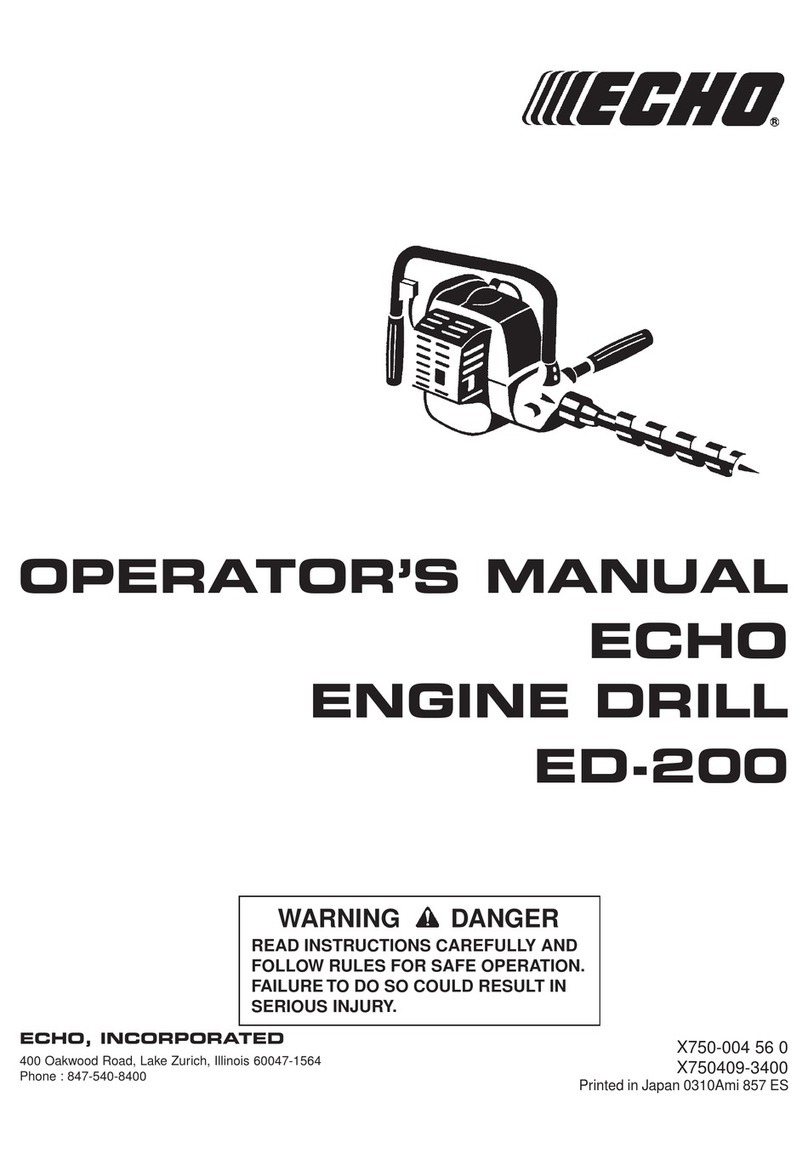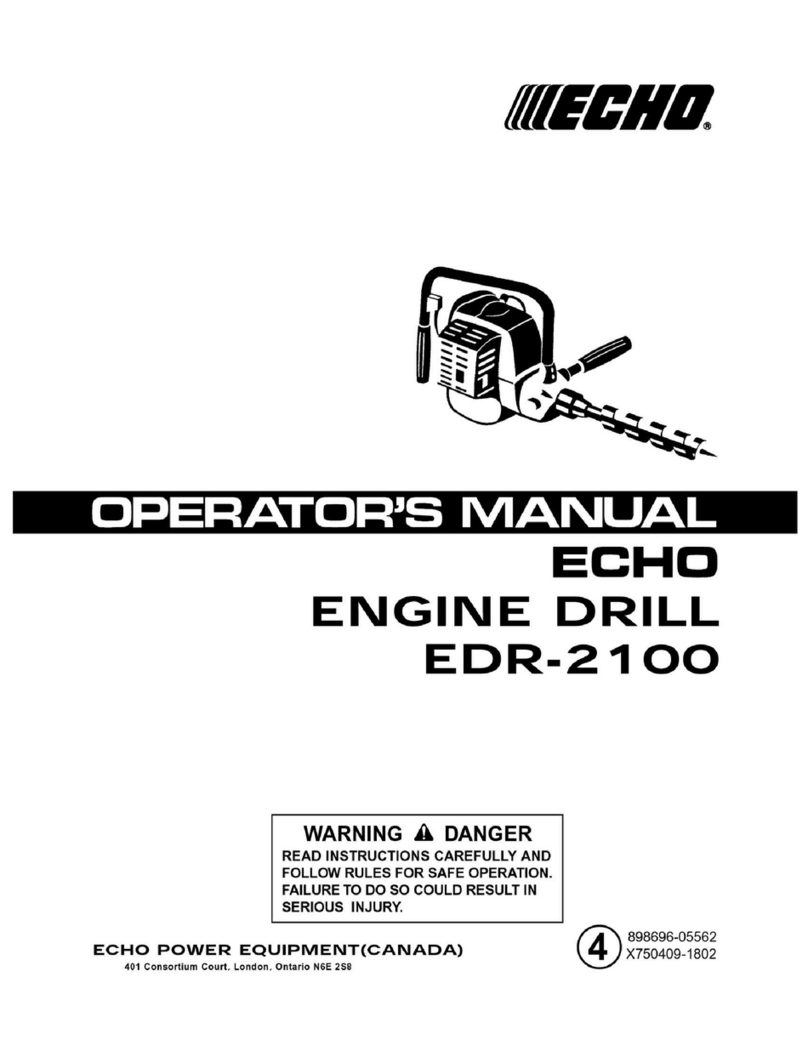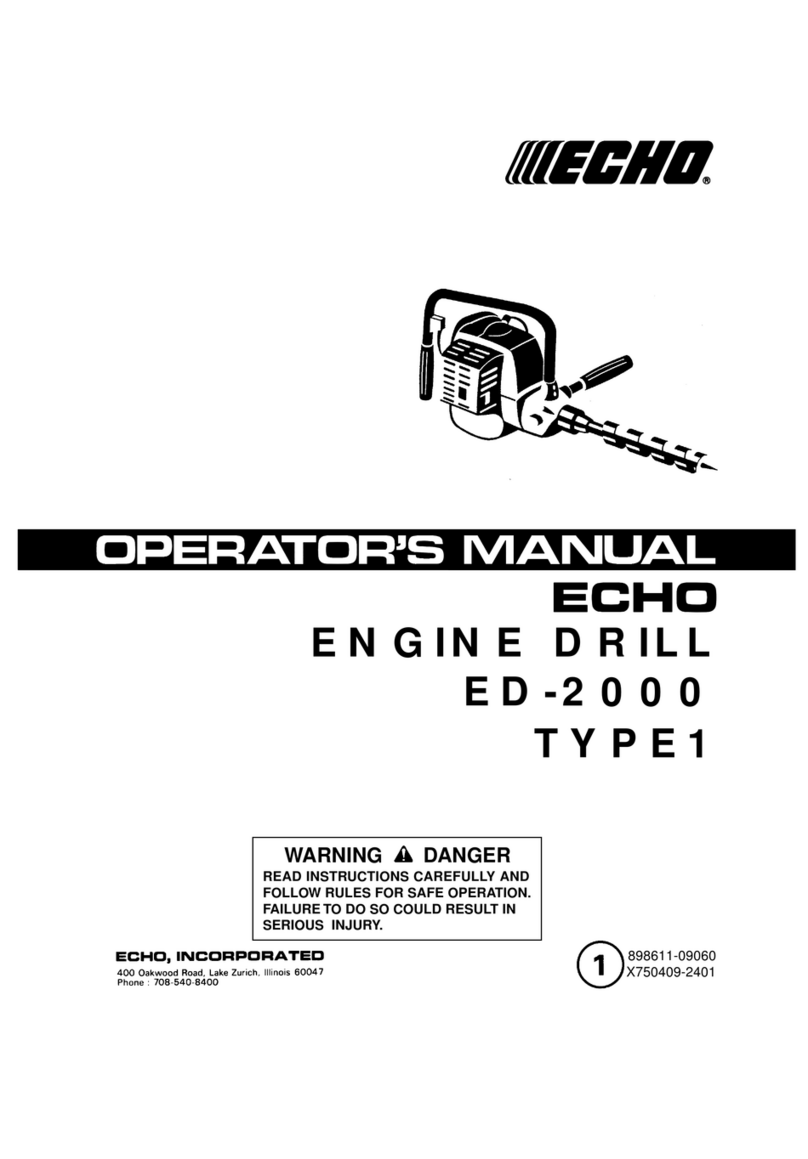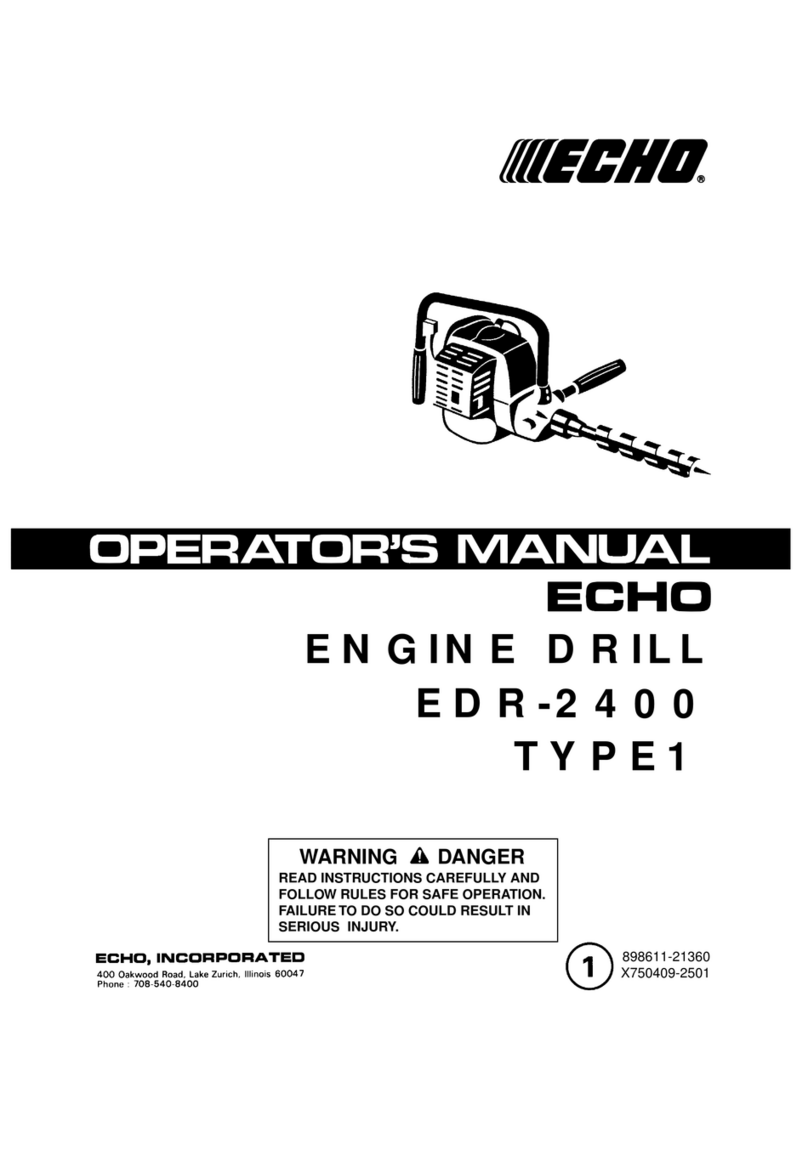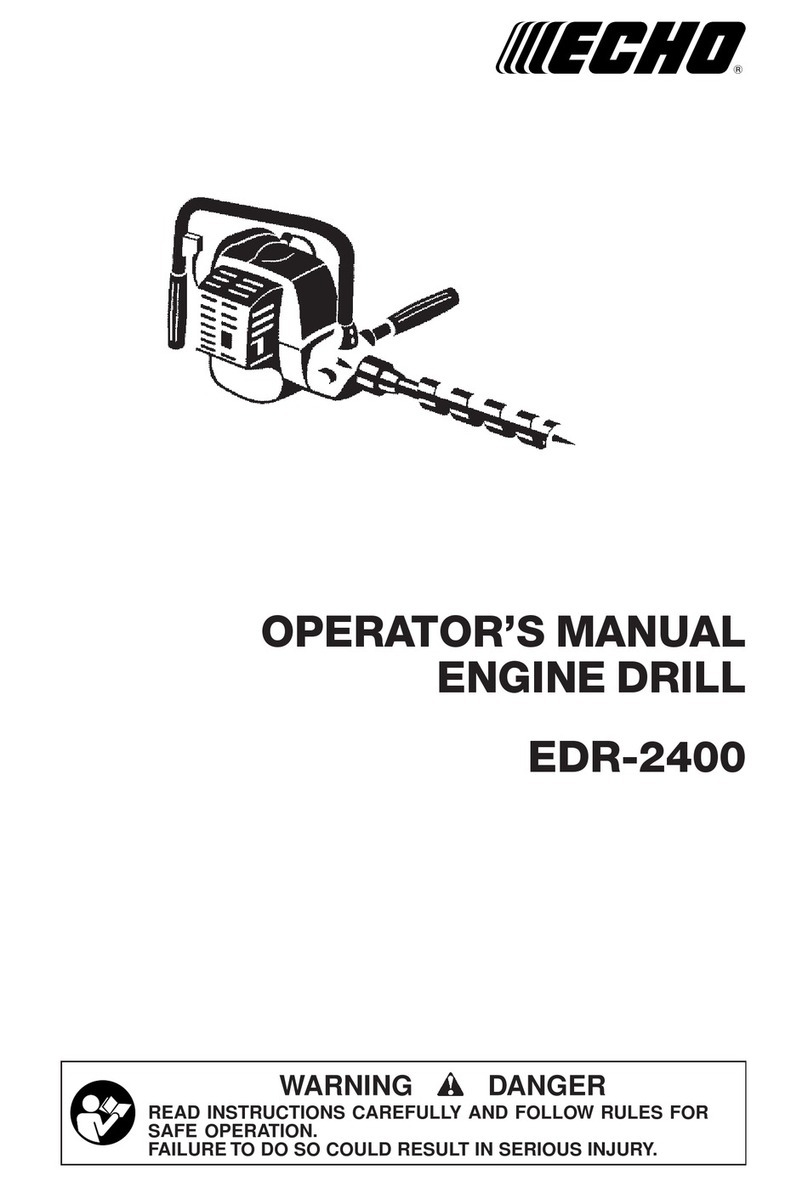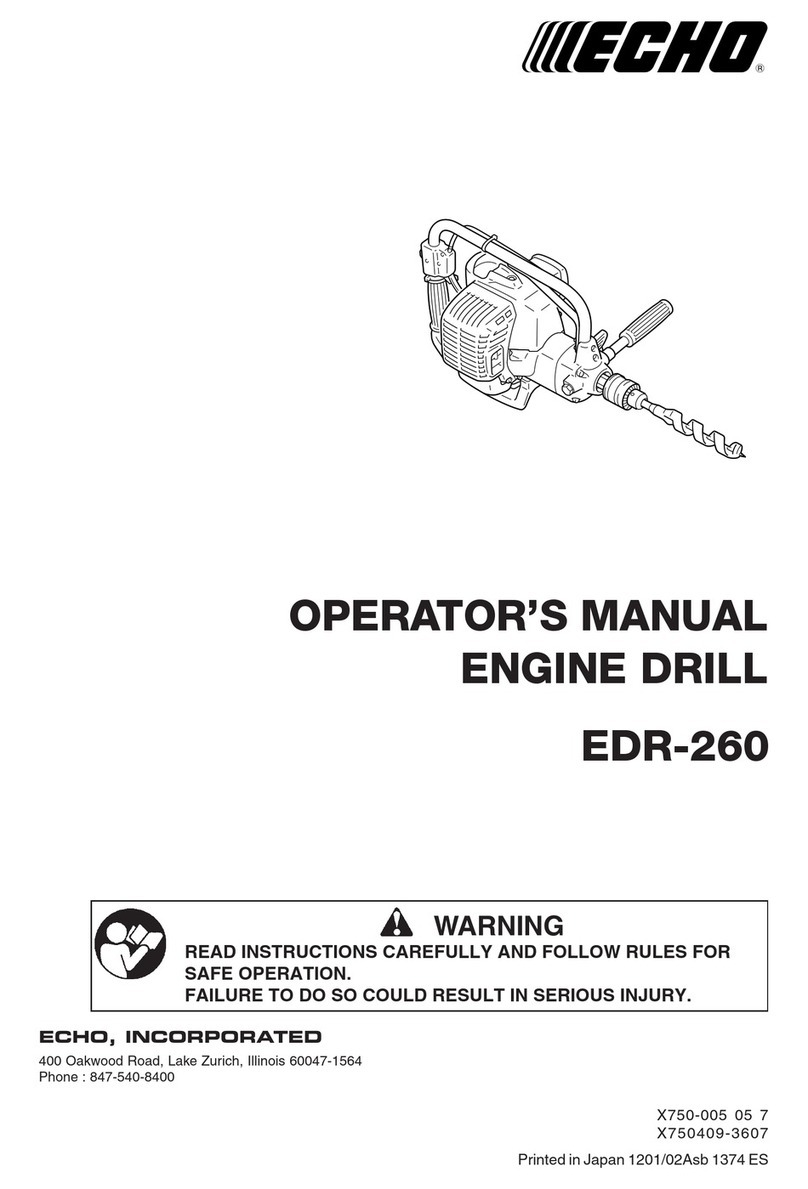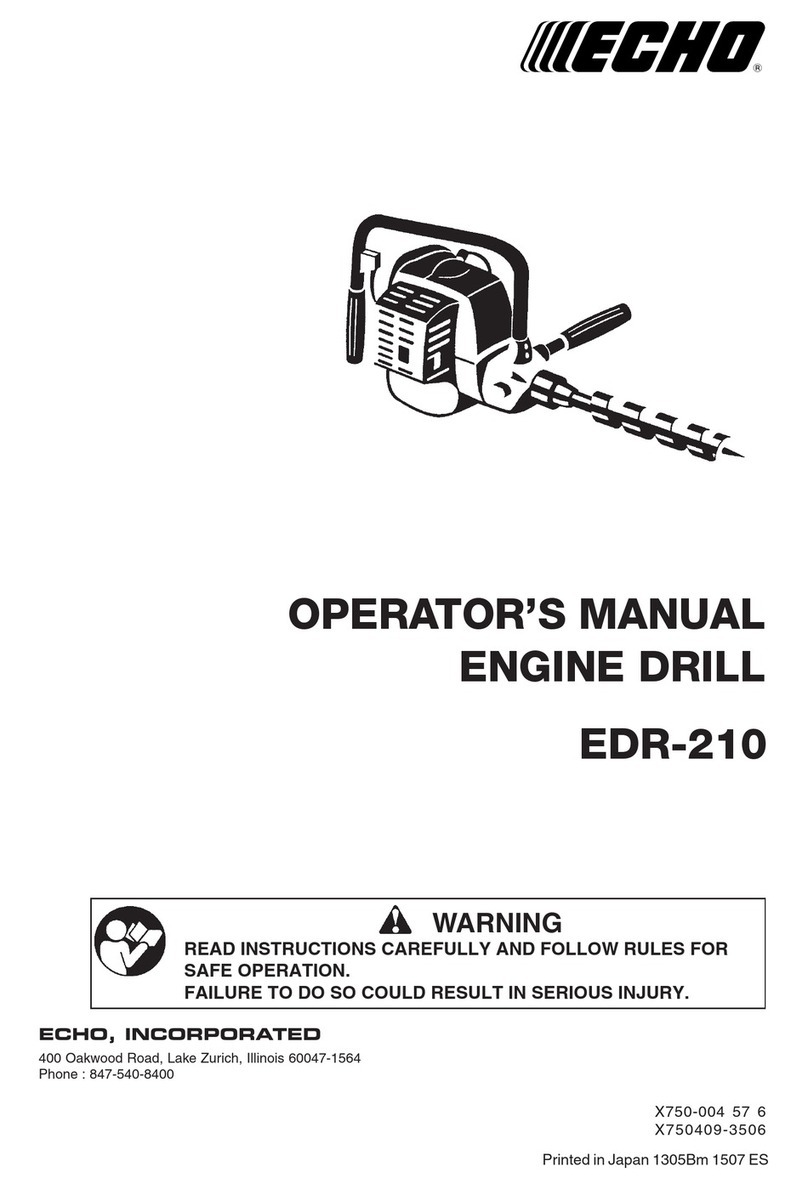
2
WARNING DANGER
ALWAYS STOP THE ENGINE WHEN A DRILL
JAM OCCURS. DO NOT ATTEMPT TO
REMOVE AN OBJECT CAUSING A DRILL
JAM IF THE ENGINE IS RUNNING. PHYSICAL
INJURY CAN OCCUR IF A DRILL JAM IS
REMOVED AND THE DRILLS START
MOVING.
• Do all drilling at full throttle speed. Drilling at
less at than full speed can damage the clutch
by allowing it to slip.
WARNING DANGER
USE A FIRM GRIP WITH THUMBS AND
FINGERS ENCIRCLING THE HANDLES. A
FIRM GRIP WILL HELP YOU KEEP CONTROL
OF THE ENGINE DRILL. NEVER OPERATE
THE ENGINE DRILL ONLY ONE HAND OR
BODILY INJURY CAN OCCUR.
• Always carry the engine drill with the engine
stopped and the HOT muffler away from your
body.
PROTECTIVE EQUIPMENT
• Always wear eye protection goggles that meet
ANSI Z87.1 standards.
• Wear hearing protection.
ECHO recommends that hearing protection be
worn at all times.
• Dress properly! Do not wear loose clothing or
jewellery, they can be caught in moving parts.
Use of sturdy gloves, non-skid footwear, and
safety glasses is recommended.
• While operating the machine always be sure of
a secure position.
WARNING DANGER
ENGINE DRILL USERS RISK INJURY TO
THEMSELVES AND OTHERS IF THE ENGINE
DRILL IS USED IMPROPERLY, AND/OR
SAFETY PRECAUTIONS ARE NOT
FOLLOWED. PROPER CLOTHING AND
SAFETY GEAR MUST BE WORN WHEN
OPERATING ENGINE DRILL.
OPERATOR SAFETY
• Read this Engine drill Operator’s Manual
carefully. Be sure you understand how to
operate this unit properly before you use it.
• Be familiar with all the controls and the proper
use of the machine.
• Wear proper clothing to protect legs and other
exposed parts of your body.
• Wear non-skid sole shoes. Do not wear open-
toed shoes or operate unit while bare footed.
• Wear eye and hearing protection devices.
• Use caution when handling fuel. Put the caps
back tightly on both the fuel can and the engine
drill fuel tank.
Move at least 3 m (10 feet) from the re-fuelling
point and be sure there is no leakage of fuel
from the fuel tank cap or the fuel system before
starting the engine.
• Operate this gasoline powered engine
equipment in a well-ventilated area only.
• Start the unit on the ground with the throttle set
at idle. Do not start if the drills are obstructed
by the ground or any other object.
• Never allow children to use the machine.
• Do not allow anyone to hold the material you
are drilling.
• Keep a firm grip on the engine drill with both
hands, one hand on the front handle, the other
hand on the rear handle.
SAFETY
